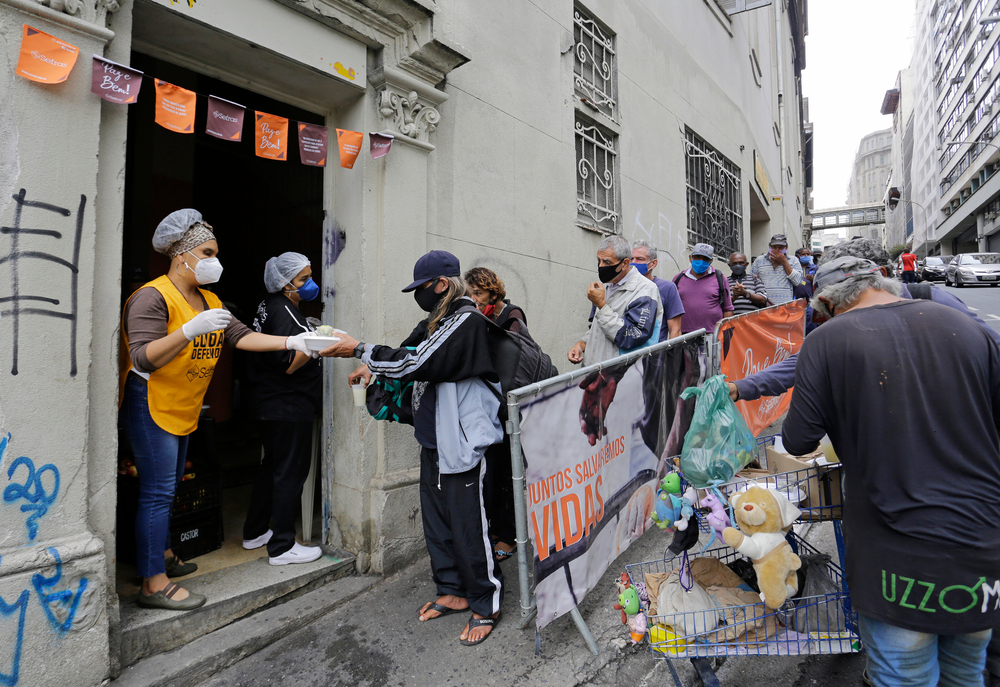Food security indicators in Latin America and the Caribbean show an improvement in the fight against hunger in the region, according to a new report by the United Nations’ Food and Agriculture Organization (FAO).
The FAO’s report, “The State of Food Security and Nutrition in the World 2023,” released this Wednesday, notes that global hunger is no longer on the rise, but remains well above pre-pandemic levels — a trend that is reflected at the regional level in Latin America and the Caribbean.
In the region, the number of undernourished people has fallen from 45.6 million in 2021 to 43.2 million in 2022 — but is still higher than in 2020, the first year of the pandemic. The FAO describes the drop in moderate or severe food insecurity in the region, from 40.3 percent in 2021 to 37.5 percent last year — or 16.5 million fewer people — as “encouraging progress” not seen elsewhere in the world.
The FAO also notes that the region has made progress in closing the hunger gender gap — globally, women are disproportionately more likely to suffer from hunger.
However, there are intra-regional disparities, with progress against hunger in South America in particular offset by rising food insecurity in the Caribbean. While the prevalence of undernourishment fell from 7 to 6.5 percent in Latin America and the Caribbean as a whole, it rose from 14.7 to 16.3 percent in the Caribbean.
Recent improvements also need to be placed in the broader context of the past few years, which have seen a spike in hunger and food insecurity around the world, largely as a result of the Covid pandemic. Despite last year’s better numbers, seven million more people in Latin America and the Caribbean are hungry today than in 2019.
The Brazilian Report documented this rise in hunger during the pandemic years in Brazil and its social consequences. Two in-depth pieces explore how the pandemic-driven crisis, which followed closely on the heels of Brazil’s 2015-2016 economic crash, increased hunger and food insecurity in Brazil, leading some families to resort to extreme measures such as renting out children to beg.
Some 10.1 million people in Brazil were undernourished in 2022, while 70.3 million suffered from moderate or severe food insecurity (of which 20.1 million suffered from severe food insecurity), according to FAO figures. In other words, nearly a third of the population (32.8 percent) faces moderate or severe food insecurity, while 4.7 percent go hungry — among the lowest numbers in the region, with Uruguay and Guyana (both below 2.5 percent), Chile (2.5 percent), Argentina (3.2 percent), and Paraguay (4.2 percent) faring better in South America.
Another measure of food insecurity is obesity, a sign of difficulty in accessing affordable, healthy food. On average, Latin America and the Caribbean faces a greater challenge than the rest of the world. In Brazil, childhood obesity is particularly high.
Taking a long-term view since the beginning of the century, all major food security indicators have worsened in Latin America and the Caribbean (particularly in Brazil) with the exception of hunger. In the medium term, the FAO sees no progress in reducing hunger in the region by 2030.
Globally, there will be between 690 and 783 million hungry people in 2022, a slight decrease of 3.8 million from the number of hungry people in 2021. Meanwhile, the prevalence of moderate or severe food insecurity remained unchanged, affecting 2.4 billion people worldwide.


 Search
Search






































